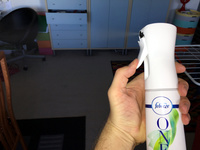 |
| Angelika/Mike Schilli |
|
|
|
Angelika Trump and associates had made efforts to repeal Obamacare, but they were unsuccessful. This was recently a hot topic in the news. What's less known is that most employees in the USA still receive their health insurance through their employer, not through Obamacare.
We also have health insurance through Michael's employer. I could have received health insurance through the institution I work for, but I am instead covered under Michael's plan because he gets better terms. The employer selects one or more health insurance providers and then offers them to employees, who must choose anew each year during the so-called "Open Enrollment" period.
Large companies typically offer not just various health insurers but also different "plans" or contracts with varying benefits. For example, Michael's employer offers the health insurers "United Healthcare" and "Kaiser." We always choose "United Healthcare" as our insurer and can then select from two different plans. The choices usually involve differences in the copay amount, the level of the deductible, the freedom to choose doctors, and the amount of the monthly premiums. Employers generally contribute to the monthly premiums, but there are no fixed percentages for employer or employee contributions. The company usually pays a significantly higher percentage of the premiums than the insured, but at my employer, it would be significantly less than at Michael's.
Every year, typically in the fall, the company prompts employees to reevaluate their insurance by either switching insurers or selecting a different plan. Of course, this only applies to the insurers and plans that the company offers. The company can also change the terms, such as by increasing the premiums, modifying the deductible, or altering the copay amounts. This period is known as "Open Enrollment." Employees make their choices in the fall, and the new terms take effect starting January 1st.
Most companies also offer other perks for employees, which can be selected during this phase as well. For Michael, these include dental and vision insurance, the option to increase a company-provided life insurance policy by paying a small premium, the possibility to purchase life insurance for a spouse and children, or to enhance an already offered disability insurance plan.
Employees also decide whether and how much they want to contribute to what's known as a "Flexible Spending Account" (FSA, Rundbrief 11/2009), which allows for tax-free deposits for anticipated medical expenses. The tax-free maximum amount currently allowed is $2,600. As mentioned, not every company offers such an extensive catalog of benefits. At my job, for comparison, only health and dental insurance are available, along with the option to contribute to an FSA. Since government social benefits in the USA are limited, companies try to attract and retain good employees not only with reasonable salaries but also through these additional benefits.
In many areas, including Silicon Valley, there is currently almost full employment, which makes it challenging to fill positions with qualified individuals. Recently, I heard on the radio that some companies are starting to help with the repayment of student loans to attract people and fill open positions. Since education is very expensive in the USA, people with higher degrees often spend years paying off substantial debts after completing their studies. This new benefit can be a significant draw for prospective employees.
Similarly, the health insurance system in the USA originally emerged after employers began offering health insurance to their employees. During World War II, there were fears of inflation, and the U.S. government decided to freeze wages and salaries. This was unpopular with the unions, which threatened to strike, and employers also disliked the law because they urgently needed workers but could not offer higher wages to recruit them. As a response, the U.S. government decided that health insurance provided by an employer would not be considered as part of salary and thus was exempt from the regulation. Companies then started offering health insurance to make their firms more attractive to job seekers. In 1943, the U.S. tax authority decided that employer-provided health insurance contributions would be tax-exempt, thereby establishing the foundation of today's health insurance system in the USA.
Indeed, this system makes it difficult to establish a national health insurance system in the USA because companies have traditionally offered these benefits voluntarily with little government regulation. Under Obamacare, companies with a certain number of employees are now required to offer health insurance to avoid penalties, but as you know, Obamacare's stability has often been in question. However, there is renewed hope as the public seems to increasingly value Obamacare. Enrollment for Obamacare happens every fall, and the early numbers look promising. The enrollment period for Obamacare started on November 1st, and the participation numbers are higher than last year. It's quite ironic: initially, a large portion of the population criticized Obamacare, but now, as there are threats to dismantle it, many people are realizing it may be better than its reputation suggested.
Greetings from Smokeytown:
Angelika & Michael










